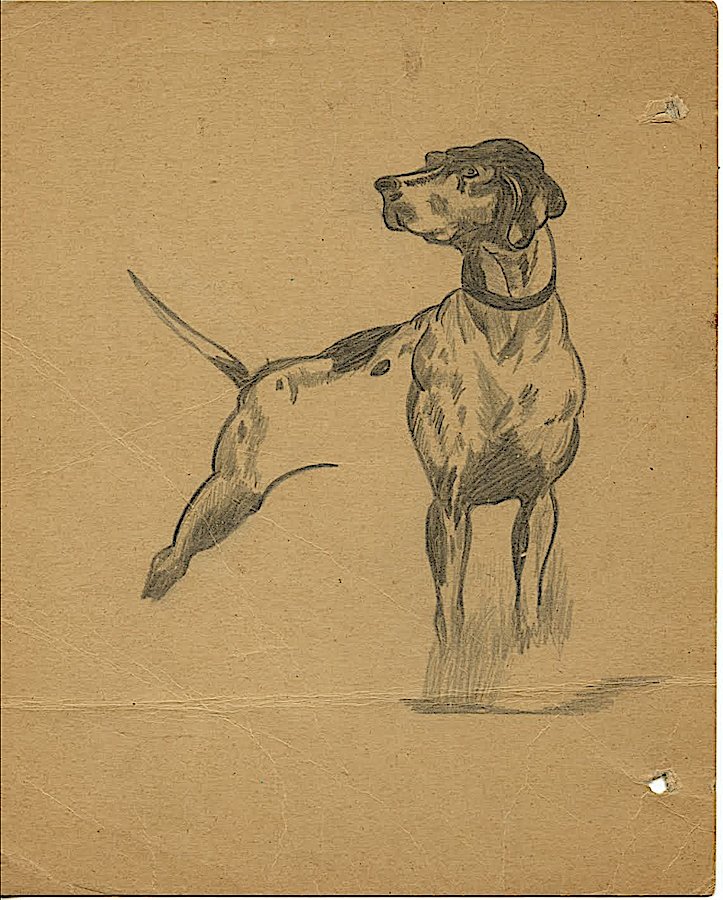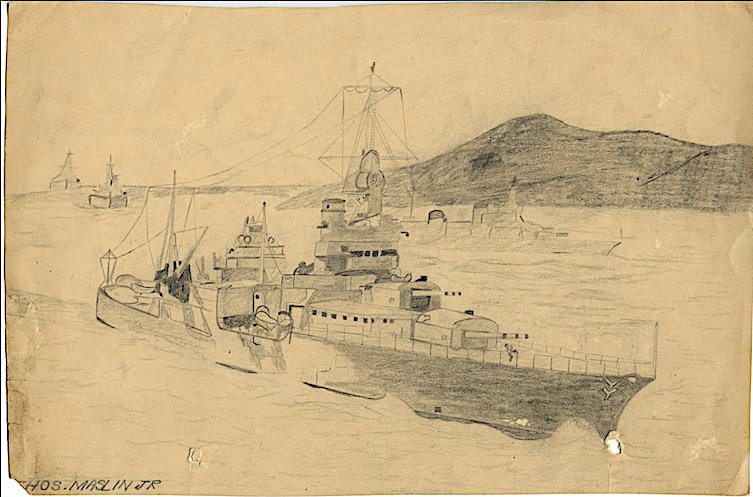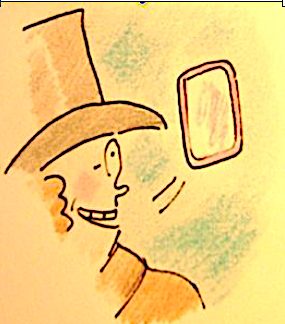Personal History: Learning To Draw
 Recently, while going through some old papers, I found a couple of drawings my father did — the only two drawings of his I have (as far as I know, he didn’t aspire to become an artist — he became a policeman).
Recently, while going through some old papers, I found a couple of drawings my father did — the only two drawings of his I have (as far as I know, he didn’t aspire to become an artist — he became a policeman).
I knew the drawings were somewhere in our home, but had I gone looking for them over the years I wouldn’t have known where to find them. So I was glad when they turned up, on their own.
Both are obviously copied from photographs, or possibly, other drawings. It’s clear he had some facility with a pencil; the drawings are fine, but, to my eyes, they tell me nothing about the fellow who drew them. Looking at them today, it made me wonder if they somehow reverse-inspired me, as a kid, once I began moving along, heading deeper into the pen and paper world. It would also explain (at least to me) why discovering James Thurber’s work was so thrilling. It represented the opposite of what many regard as “good drawing” (a notion I’ve always found laughable). Thurber’s work, I believe, is drawing, as he (or someone else) once said, that was connected to his psyche. I’m not sure there’s anyone who would deny sensing personality in Thurber’s work.
I grew up in a book-less, magazine-less house. There was one exception, and an important one: we had a set of Encyclopedia Britannica’s that sat in their own dark wood case with glass doors. I kept my ten gallon aquarium on top of the case (a dangerous place to sit an aquarium now that I think about it). That set of encyclopedias was my initial graphic education; the large green bound heavy tomes contained numerous full-page color-plates. The color-plates, especially those showing heraldry, fascinated me. I drew a lot of shields as a kid. If you’re familiar with shield art, you’ll know there’s a whole lot going on, design-wise; the drawings are disciplined. I found the images attractive enough to copy them, and then, to create my own less “perfect” versions. To this day I enjoy tossing an approximation of a stretched-out drawing of a lion onto a knight’s shield, or maybe just a pineapple, or band of diagonal lines.
Besides the Britannicas, our home had comic books (mostly Batman and Superman). In my earliest grammar school years, I tried, for a while, to copy the art. It didn’t take long to realize I couldn’t draw as well as the comic book artists. My attempts at free-hand copying (that is, drawing without tracing) were frustrating. I could see how awkward my figures looked. One small mistake, and the drawing was ruined, the comic world shattered as the amateur effort was exposed. I found that drawing what I made up was a better way to go. If I drew something I made up, it looked the way I wanted it to look. Even if it appeared stilted, at least there was nothing else to compare it to: no well-drawn dog, or well-drawn ship.
__________________________________________________________________________
The Tilley Watch Online, The Week Of November 11-15, 2024
An end of the week listing of New Yorker artists whose work has appeared on newyorker.com features
Daily Cartoon: Habiba Nabisubi (an online only contributor), Bob Eckstein, Christopher Weyant, Enrico Pinto, Brendan Loper.
“Snail Mail”: A gallery of snail drawings.


